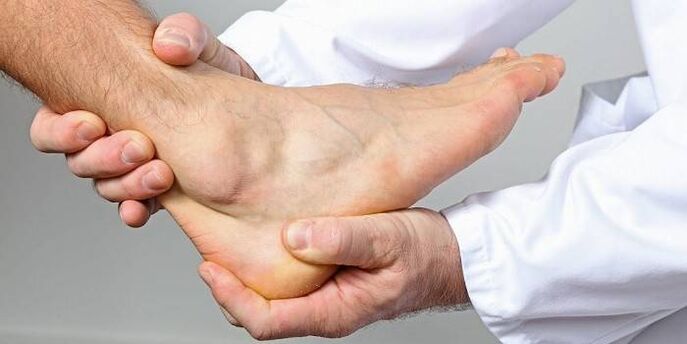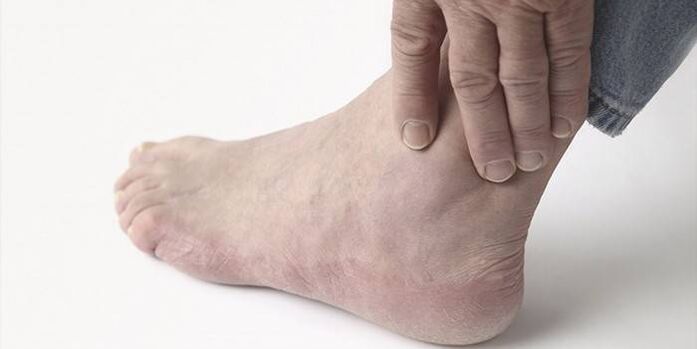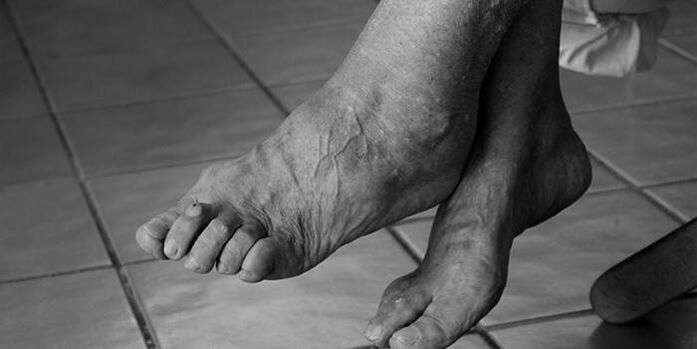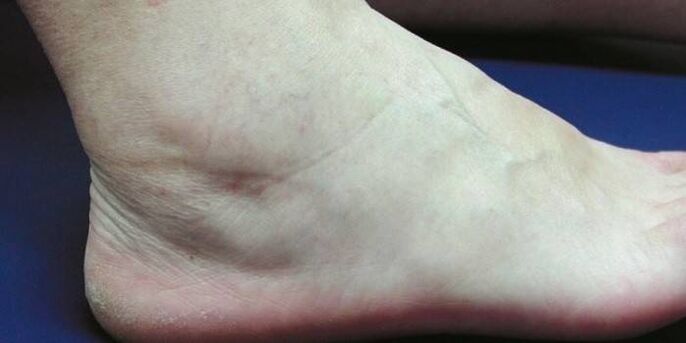The older a person gets, the higher the risk of developing degenerative and destructive changes, especially in the work of the musculoskeletal system. Ankle osteoarthritis is a disease that affects the cartilage and tissue of the joint to varying degrees and, if left untreated, becomes a disability. With the initial development of the pathology, the symptoms of the disease are poorly expressed, and its presence can only be determined with the help of X-rays.
What is ankle osteoarthritis
The condition in which the articular cartilage and surrounding tissue are gradually destroyed is called ankle arthrosis. The basis of the pathology is a degenerative-dystrophic process, and inflammation is secondary. Ankle joint arthrosis has an undulating chronic course with alternating exacerbations and remissions. The disease progresses gradually. The female and male population suffer from osteoarthritis equally. With age, the likelihood of developing a pathology increases sharply.
Symptoms
Ankle disorders are regularly exacerbated. Symptoms may not appear at all during osteoarthritis remission. The pathology develops without giving itself away. A person experiences moderate pain in the ankle with significant physical exertion, increased stiffness and fatigue in the legs. As the pathology progresses, the pain becomes more pronounced, occurs at rest and intensifies at night.
When the deformity of the joint becomes visible, the range of motion in the ankle decreases and a characteristic crunch and click can be heard when walking. Sometimes there is a curvature of the lower leg, the legs are given a valgus (X-shape) or varus (O-shape) shape. The onset of pain is characteristic of arthrosis of the ankle, which manifests itself at the beginning of movement after a state of rest and disappears when walking.
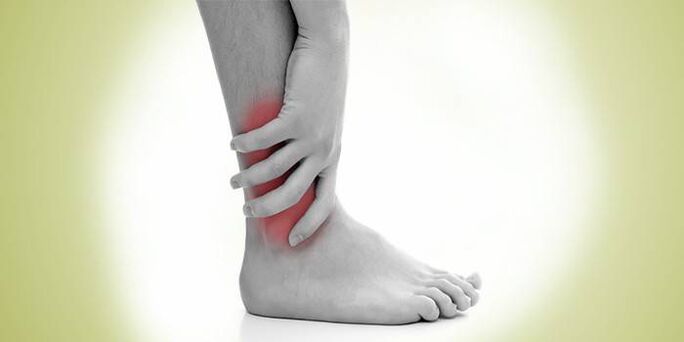
Causes of occurrence
Ankle arthrosis is divided into two groups: primary and secondary. The first arises for reasons unknown. The second develops due to adverse factors: inflammation, trauma, etc. In both cases, the pathology is due to metabolic disorders in cartilage tissue. The main reasons for developing secondary osteoarthritis:
- Deformation of the bone (fractures) or damage to the ligaments due to an ankle injury;
- Stretching of the joint capsule;
- Pinching the nerve endings of the lumbar spine;
- Obesity;
- wearing uncomfortable shoes;
- prolonged load on the joint (intense sport, constant standing);
- Diseases related to metabolic disorders (gout, diabetes mellitus, estrogen deficiency in menopause and others);
- Intervertebral hernias, osteochondrosis of the lumbar spine and other diseases accompanied by a disorder of the lower leg, muscular system or nerve entrapment.

The degree of the disease
There are three degrees of arthrosis of the ankle, which are specified by hardware diagnostics:
- I degree - pathological changes are not noticeable, there is a narrowing of the ankle joint gap, compression of the talus;
- II degree - swelling becomes a consequence of the progression of the disease, painful sensations appear in the weather, the mobility of the legs decreases, joint deformation is noted;
- III. Degree - there is a loss of the amortization properties of the joint, ossification of cartilage tissue, deformation of the foot leads to disability.
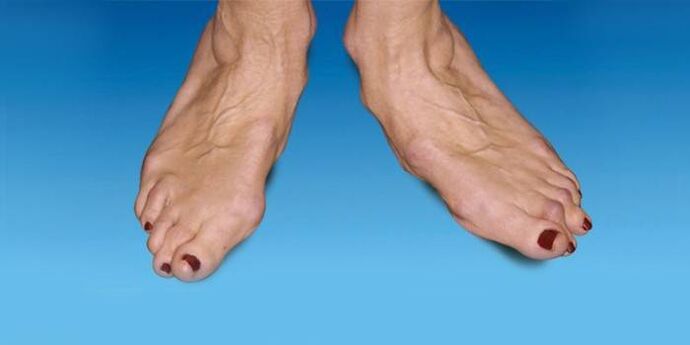
Possible consequences
A patient with osteoarthritis of the ankle can be assigned a disability, since the complete destruction of the joint leads to a reduction in motor activity. To do this, the patient must undergo a medical examination. Categories of patients to whom a disability can be assigned:
- Patients with progressive osteoarthritis who have been ill with exacerbations of the disease at least 3 times / year for more than 3 years;
- Patients who have undergone joint surgery and have a life impairment;
- Patients with severe impairment of static-dynamic function.
diagnosis
A diagnosis of "Grade II ankle osteoarthritis" (or any other stage) is made based on an examination, visual examination, and laboratory result. X-rays play a crucial role. In the most advanced stages, deforming osteoarthritis and cystic formations in the bone area are noted. In difficult cases, the patient is referred for a CT scan of the ankle in order to assess the bone structure more precisely. An ankle MRI may be performed to examine the soft tissue.
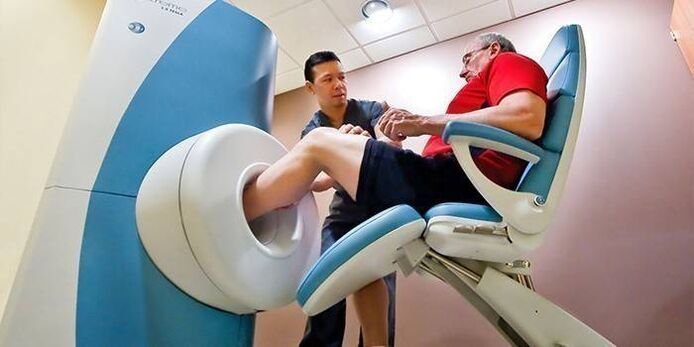
Treatment of ankle arthrosis
Therapy of the affected joint in post-traumatic osteoarthritis is carried out according to the general scheme. The comprehensive treatment includes:
- Elimination of pain symptoms;
- Elimination of the inflammatory process;
- Restoration of joint mobility;
- Improvement of trophic processes;
- Restoring normal blood circulation in the extremity:
- Replacement of a joint with artificial prostheses (if necessary).
Medication
Drug therapy is selected taking into account the signs of the disease and the stage of the disease. During periods of exacerbation, nonsteroidal anti-inflammatory drugs are used in the form of tablets or injections. Together with them, it is recommended to take local anesthetics in the form of gels or ointments. If there is pronounced pain sensation, corticosteroids are prescribed for intra-articular blockages. They are introduced no more than 4 times / year. To normalize metabolism in cartilage tissue, drugs of the chondroprotective group are prescribed.
Anoint
Topical medications may not cure osteoarthritis or osteoarthritis of the ankle, but they can help speed recovery and prevent the disease from recurring. Effective drugs include:
- A multi-component homeopathic ointment for the treatment of inflammatory and dystrophic diseases of the musculoskeletal system. Apply a thin layer to the affected area 1-3 times a day. The course duration is 2-4 weeks. Local skin reactions occur rarely: urticaria, burning sensation, itching, development of dermatitis.
- Nonsteroidal anti-inflammatory drugs with analgesic effects. Apply to the affected joints in a small dose 3 times a day. The doctor prescribes the course of treatment individually. On average, such ointments are used until the pain disappears, but not more than 14 days in a row.
physical therapy
The following physiotherapeutic methods help to suspend osteoarthritis of the ankle:
- Medium wave ultraviolet radiation. Under the influence of ultraviolet waves in the affected area, there is an accumulation of substances that reduce the sensitivity of the nerve endings, which allows the pain syndrome to be quickly relieved.
- Infrared laser therapy. The laser reduces the sensitivity of the nerve roots, improves blood circulation. The procedure relieves the patient of the stress endured by constant pain in the ankle.
diet
In the case of inflammatory diseases of the knee joints, bone tissue and the ankle ligaments, a special diet is indicated. It is necessary to include jelly, jellied meat and edible gelatin in the diet, as these products are natural chondroprotectors that restore cartilage tissue. Complex carbohydrates (vegetables, fruit, whole grain bread), milk protein (cottage cheese, cheese), vitamin and mineral complexes must be on the menu. For better absorption of food, the food must be steamed or boiled.
Sports exercise
After studying the x-ray, the doctor may prescribe the performance of therapeutic exercises. Special exercises for the ankle help relieve pain, relieve muscle tension and restore blood circulation. Examples of movement therapy exercises:
- sitting on a chair, socks and heels come off the floor alternately;
- the toes of the feet rest on the ground, the heel lifts and makes circular movements;
- the legs are together, the foot extends to the side of the body.
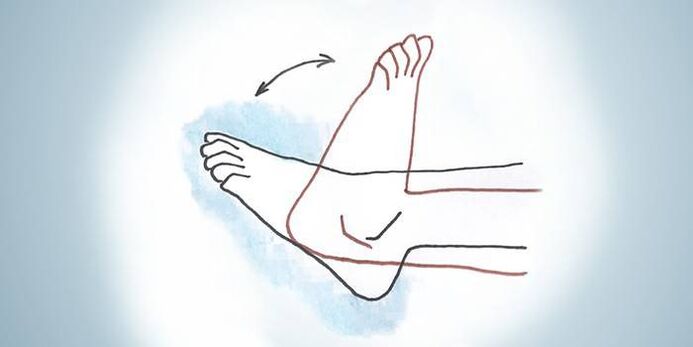
massage
The procedure for ankle arthrosis is characterized by a multitude of multi-stage techniques. The purpose of massage is to improve lymph and blood circulation in the muscles of the foot of the joint cavity to get rid of the poor mobility of the ankle. To relax the muscles, first massage the ankle using kneading and brushing techniques. Then the toes are massaged, then the foot and heel are kneaded. Finish by working deep on your ankles.
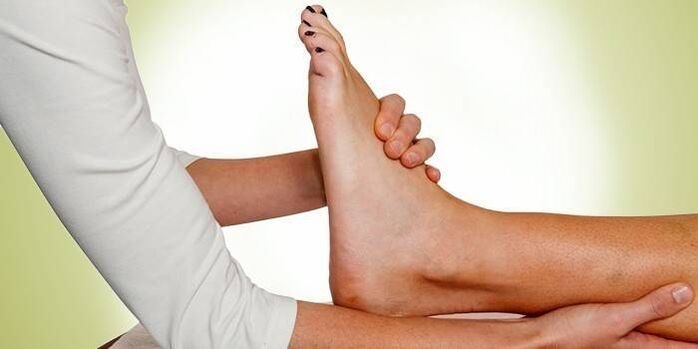
surgery
If conservative therapy for osteoarthritis did not produce positive results, the attending physician will prescribe surgical treatment. Among the surgical methods, the best are considered to be:
- Arthroplasty of the ankle. At the point of cartilage destruction, a state-of-the-art ceramic or metal prosthesis is completely or partially replaced.
- Arthrodesis of the ankle. It is prescribed with severe destruction of the articular surfaces. During the operation, the bones are rigidly fixed by their internal connection.

Traditional methods
Village recipes help with the complex therapy of the ankle joint for osteoarthritis:
- Chalk and kefir. Mix the two ingredients into a paste. Apply this mixture to the sore joint at night to relieve the swelling.
- Butter and cinquefoil. Mix the ingredients in a ratio of 10: 1 and rub into the sore joint overnight to relieve pain.
Ankle arthrosis prevention
To reduce the risk of ankle osteoarthritis, preventive measures must be taken, including:
- Control of body weight;
- right nutrition;
- wear comfortable shoes without high heels;
- Avoidance of joint injuries;
- timely treatment of endocrine and vascular diseases;
- regular exercise of gymnastics for the ankle.
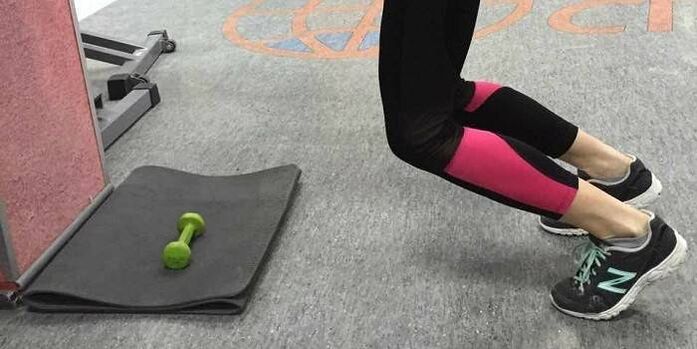
Photo of ankle arthrosis
